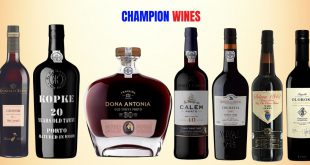 Basile Guibert makes a point about the most complex, intriguing red in the world
Basile Guibert makes a point about the most complex, intriguing red in the world
Mas de Daumas Gassac is the most diverse, all-embracing wine in the world.
Look at the make-up of their two top wines.
Mas de Daumas Gassac Blanc 2020
28% Viognier (origin of vine: Georges Vernay of Condrieu); 23% Petit Manseng (origin of vine: Charles Hours of Bearn); 20% Chardonnay (origin of vine: Comtes Lafon of Meursault); 12% Chenin Blanc (origin of vine: Domaine Huet of Vouvray); and, the balance 17% comprising Bourboulenc, Petit Courbu, Muscat Ottonel, Muscat Petit Grain, Muscat d’Alexandrie, Gros Manseng, Semillon, Neheleschol, Amigne, Sercial de Madere, Khondorni, Tchilar, Albarino, Falanghina, Fiano, and Grechetto Todi
Mas de Daumas Gassac Rouge 2019
78% Cabernet Sauvignon; 4% Merlot; 3% Cabernet Franc; 3% Pinot Noir; 3% Petit Verdot; 3% Tannat; 2% Malbec; and, the balance 4% comprising Barbera, Nebbiolo, Dolcetto, Armigne, Arenie, Bastardo, Saperavie, Tchkaveri, Montepulciano, Areni Noir, Tchekavesi, Souzon, Brancellao, Carmenere, Abouriou and Plavac Mali.
The more obscure white and red varieties come from places including Israel, Armenia, Switzerland, Portugal, Spain, and Italy.
If the United Nations – or any international body – was at a loss what wine to serve at official receptions, they need look no further than Mas de Daumas Gassac, referred also to as “Lafite of the Languedoc”.
Earlier in the week, I tasted the above two wines at the Singapore home of Basile Guibert (a member of the owning family) and his wife Marie-Alix de Grully.
Guibert has been based in Singapore since February 2017 and, prior to Covid, travelled the region representing the wines of the family.

TASTING NOTES
Mas de Daumas Gassac Blanc 2020
Floral and fruity – including peach and nectarine. As soon as the wine is on the palate, the creamy texture impresses immediately. Intensity, concentration of fruit, generous body, and roundness of freshness. Savouring the wine, we know we are in the South of France. It could be the Rhone, Provence or, in this case, the Languedoc. Enjoy in a voluminous Burgundy glass or Cognac balloon. Pour a large, generous portion. Twenty varieties make this arguably the most complex white in the world. At 25 hectolitre per hectare, the yield is even lower than that of a Grand Cru Burgundy (40 to 64 hl/ha). Average age of vines is 34 years.
Mas de Daumas Gassac Rouge 2019
Violets and blue/purple/dark fruits including berries, cherries, and currants. A hint of cloves and cardamon. The depth and density of fruit is carried by rich, ripe, silky tannins, while all the time pursued by freshness and vivacity. A wine to enjoy now and a vintage to travel a long journey into the next few decades. Not to be outdone by the Blanc, at 23 varieties, this has to be the most complex and intriguing red in the whole world. As with the white, at 25 hectolitre per hectare, the yield is also lower than that of a Grand Cru Burgundy (35 to 37 hl/ha). Average age of vines is 43 years.
Below is the video on the 2020 Harvest.


